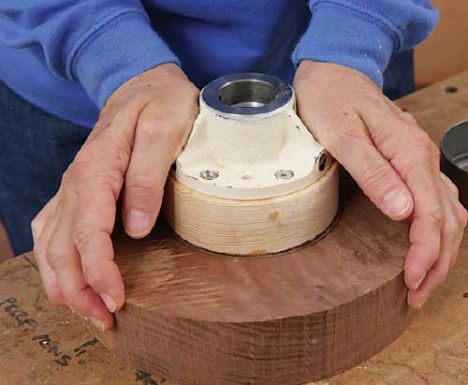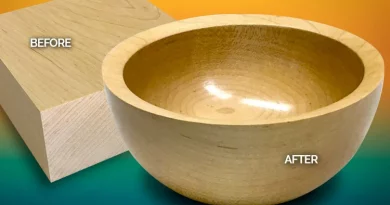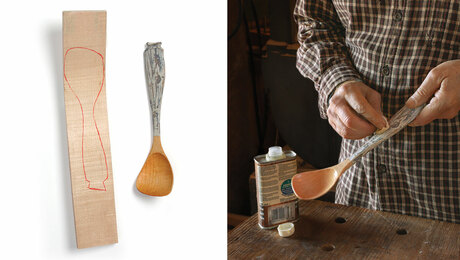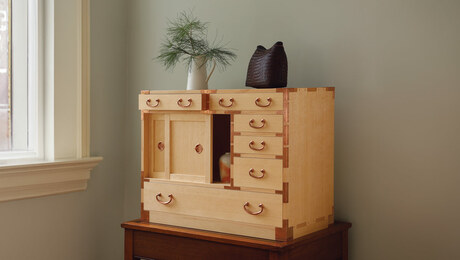Mounting Wood On The Wood Lathe: Using A Glue Block
While one of the great advances in woodturning in recent years has been the development of the four-jaw chuck to mount wood for turning, the price tag on a good chuck is a shock to many turners. The price for a decent four-jaw chuck often accedes the price of many starter lathes. One of the things that a wood-turner needs to remember when going into faceplate turning is the use of the old-fashioned glue block for holding wood.
The use of the glue block arises from the desire to not have screw holes observed in the bottom of such items as bowls and platters. Generally, such an item is made by first rough turning it from green wood and then letting it dry in the shop for some time. Later it is remounted to the wood lathe and the finish is turned. It is during this remounting that it may be screwed to the faceplate, thus leaving holes in the finished product.
These holes then have to be filled or covered in some way. In addition, the length of the screws determines a certain depth of wood that cannot be used or the tools would hit the screws themselves.
A simple solution, one century old, is the use of a glue block to hold the wood to the lathe. First, the bottom of the bowl is flattened using a plane or other tool. Second, a waste block of wood is screwed to the faceplate. Third, the waste block is flattened. Third, the waste block is glued to the bottom of the bowl using the carpenter’s white glue.
Generally, a piece of craft paper is glued between the waste block and the bowl. This enables the bowl to be finished turned and then a chisel blow between the block and the bowl splits the paper down center. Then the waste paper can be sanded from the bottom of the bowl and the bottom finished. If desired, the paper could also be removed from the waste block and it could be used again.
There are a few drawbacks to this system. While glue has a great hold but it needs to be clamped and let dry for at least eight hours. Also, the wood used has to be dry so this can not help with green turnings. In addition, there is the fuss of sanding away all that glue and paper, a combination known for quickly clogging sandpaper.
Thankfully, a couple of modern glues rise to the occasion. When turning dry wood such as a dried bowl blank, hot glue can be used to glue the wood block to the bowl. Within a couple of minutes, it is ready to mount on the lathe and turn. Either the block can be parted from the blank with the lathe running or the whole assembly can be taken off and the waste block removed with a sharp rap of a chisel at the glue line. Any remaining glue is easily peeled off.
Similarly, a medium-thick cyanoacrylate glue can be used to bond a green blank to a waste block. The glue is applied to the waste block and accelerator to the blank and the two are pressed together. Again, a couple of minutes are sufficient to hold the work for turning, and again a sharp blow at the glue line will separate them after the turning is done.
Modern adhesives simply allow the old methods to work in today’s shops. While technology advances us a little we are still working historically. The old ways may not always be the best, but they certainly work and work well.




